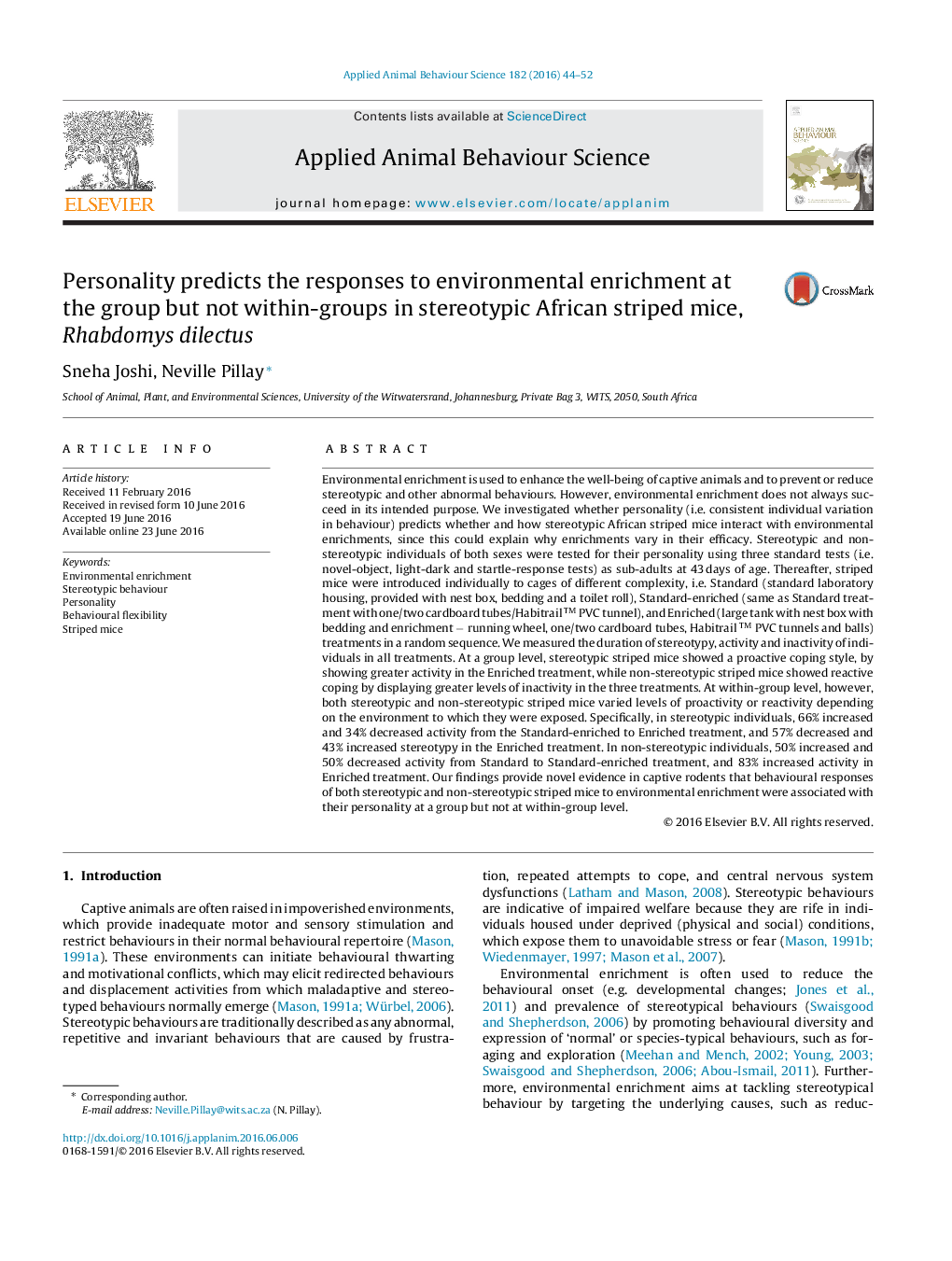| Article ID | Journal | Published Year | Pages | File Type |
|---|---|---|---|---|
| 4522334 | Applied Animal Behaviour Science | 2016 | 9 Pages |
•We assessed whether personality influences enrichment use in stereotypic African striped mice.•Stereotypic individuals showed a proactive coping style and non-stereotypic individuals a reactive coping style.•Evidence of flexible behavioural responses found for both stereotypic and non-stereotypic African striped mice.•Personality does not predict behavioural variation in response to environmental enrichment for stereotypic and non-stereotypic African striped mice.
Environmental enrichment is used to enhance the well-being of captive animals and to prevent or reduce stereotypic and other abnormal behaviours. However, environmental enrichment does not always succeed in its intended purpose. We investigated whether personality (i.e. consistent individual variation in behaviour) predicts whether and how stereotypic African striped mice interact with environmental enrichments, since this could explain why enrichments vary in their efficacy. Stereotypic and non-stereotypic individuals of both sexes were tested for their personality using three standard tests (i.e. novel-object, light-dark and startle-response tests) as sub-adults at 43 days of age. Thereafter, striped mice were introduced individually to cages of different complexity, i.e. Standard (standard laboratory housing, provided with nest box, bedding and a toilet roll), Standard-enriched (same as Standard treatment with one/two cardboard tubes/Habitrail ™ PVC tunnel), and Enriched (large tank with nest box with bedding and enrichment − running wheel, one/two cardboard tubes, Habitrail ™ PVC tunnels and balls) treatments in a random sequence. We measured the duration of stereotypy, activity and inactivity of individuals in all treatments. At a group level, stereotypic striped mice showed a proactive coping style, by showing greater activity in the Enriched treatment, while non-stereotypic striped mice showed reactive coping by displaying greater levels of inactivity in the three treatments. At within-group level, however, both stereotypic and non-stereotypic striped mice varied levels of proactivity or reactivity depending on the environment to which they were exposed. Specifically, in stereotypic individuals, 66% increased and 34% decreased activity from the Standard-enriched to Enriched treatment, and 57% decreased and 43% increased stereotypy in the Enriched treatment. In non-stereotypic individuals, 50% increased and 50% decreased activity from Standard to Standard-enriched treatment, and 83% increased activity in Enriched treatment. Our findings provide novel evidence in captive rodents that behavioural responses of both stereotypic and non-stereotypic striped mice to environmental enrichment were associated with their personality at a group but not at within-group level.
